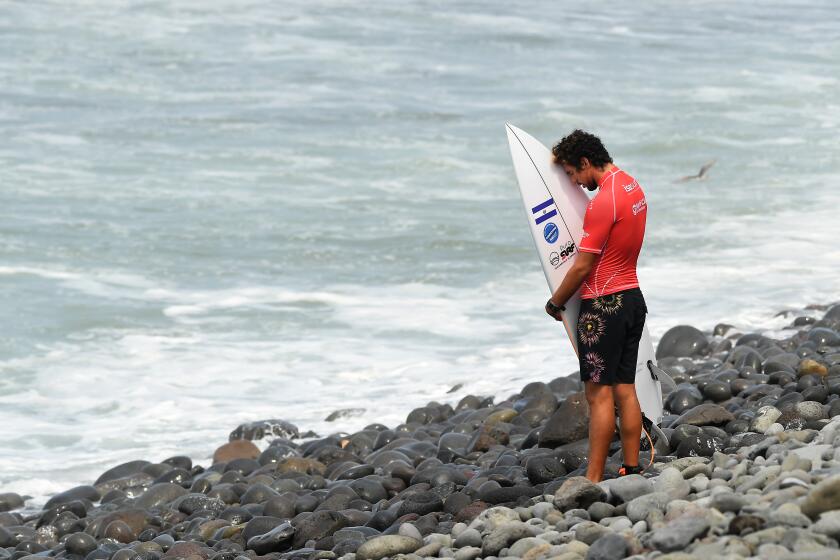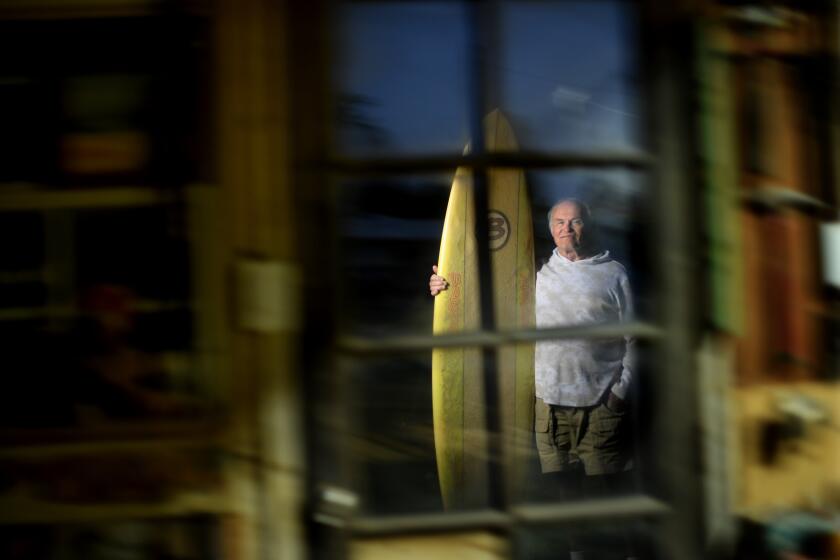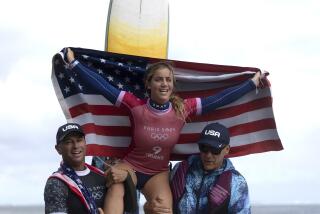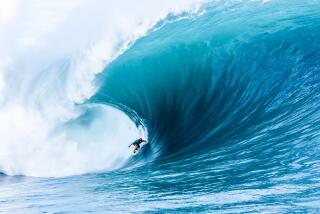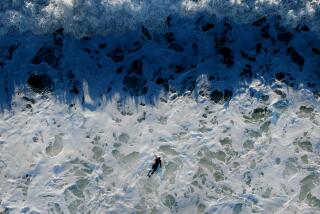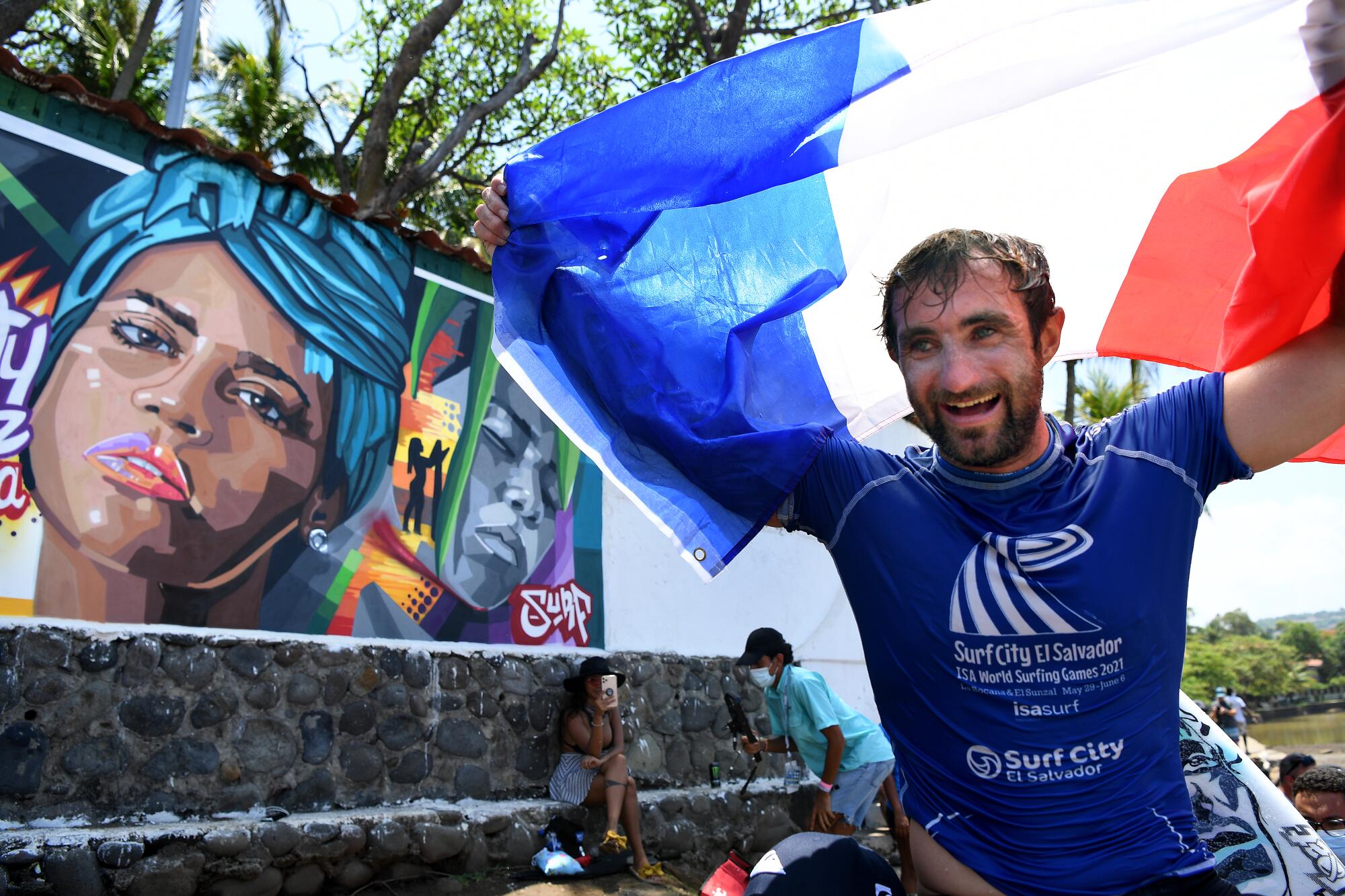
LA LIBERTAD, El Salvador — Shortly before Christmas, just as she was beginning to step up her training for the Olympic surfing trials, Katherine Díaz gathered with some friends for what her brother José called a “spiritual reunion.”
At one point, the women were handed lined loose-leaf paper and asked to draw a picture of themselves in the future. But Díaz didn’t imagine the medal platform in Tokyo. Instead, she drew herself riding a huge blue wave under a bright sun, a lone fluorescent-yellow thunderbolt streaking toward her.
Four months later, standing on the beach holding a surfboard under a bright sun, Díaz was killed by a lone lightning strike. El Salvador’s top female surfer was just 22.
“She knew what would happen to her,” her brother José “Bamba” Díaz said last week, standing in front of the tiny comedor his mother runs just a few dozen paces from the beach where her daughter died. Next to the small diner someone has painted a stark, mostly black-and-white mural of a pensive Katherine, eyes closed and her long black hair draped over one shoulder. “Kathy,” painted in thin white italic letters, runs across the bottom.
The mural, one of two beachfront memorials to Díaz, is near the end of a long, narrow corridor of shops and restaurants leading to the rocky shore between El Sunzal and La Bocana, where last week’s final Olympic qualifying event, the competition Díaz was training for, took place. As surfers passed, some reached out silently to touch the painting.

“She was the Bryan Perez of the girls,” said José Díaz, referencing El Salvador’s men’s national champion, whose own Olympic ambitions came up just short.
“She was just 22 with her whole life ahead of her, but with a stroke of destiny she died doing what she loved most.”
— El Salvador president Nayib Bukele on surfer Katherine Díaz
In reality, she may have been more, because Díaz was paddling against strong societal currents in a country where women athletes are not afforded the same opportunities and respect as their male counterparts. That made her both a trailblazer and a role model when she became the first female to represent El Salvador at the ISA World Surfing Games and ISA World Junior Surfing Championship.
“I knew her since she was a baby. It has been a great loss,” Marcelo Castellanos, Perez’s coach, said of Díaz’s death. “It hurt the whole team a lot. She was very young and she definitely had the talent to one day be in the Olympics.
“I think that we all, in some way, dedicate this event to her and we know that she is with us, accompanying us.”
Díaz came from a family of surfers: Her brother, president of the Salvadoran surf federation, was a competitive surfer and is now a coach and judge, while an uncle, Beto Díaz is a coach. Growing up at the beach, she first climbed on a board at the age of 9 and dreamed of going to the Olympics “since she was a little girl,” her brother said.
A broken surfboard helped Bryan Perez escape poverty and endure deep loss. Fan support softens the blow of missing the Olympics for the elite surfer.
That dream became a possibility in 2016, when the International Olympic Committee approved surfing as an Olympic sport, then moved a big step closer to reality when the International Surfing Assn. announced it would stage the final qualifying event off La Bocana and El Sunzal, in the waters Diaz had surfed her whole life.
But COVID-19 delayed the Games, and the final qualifying event, for a year — which is how Díaz found herself at La Bocana, her favorite beach, reaching out to hug another surfer at the water’s edge a little after 4 p.m. on a mostly clear Friday in March. The lightning strike — the only one that day, witnesses said — hit Díaz with such intensity that it killed her instantly and tossed the friend several feet through the air.
Beto Díaz, who was standing nearby, had his surfboard knocked from his hands.
At the opening ceremonies of the World Surfing Games, as the qualifying event was called, Salvadoran President Nayib Bukele eulogized Díaz as “a great Salvadoran surfer.”
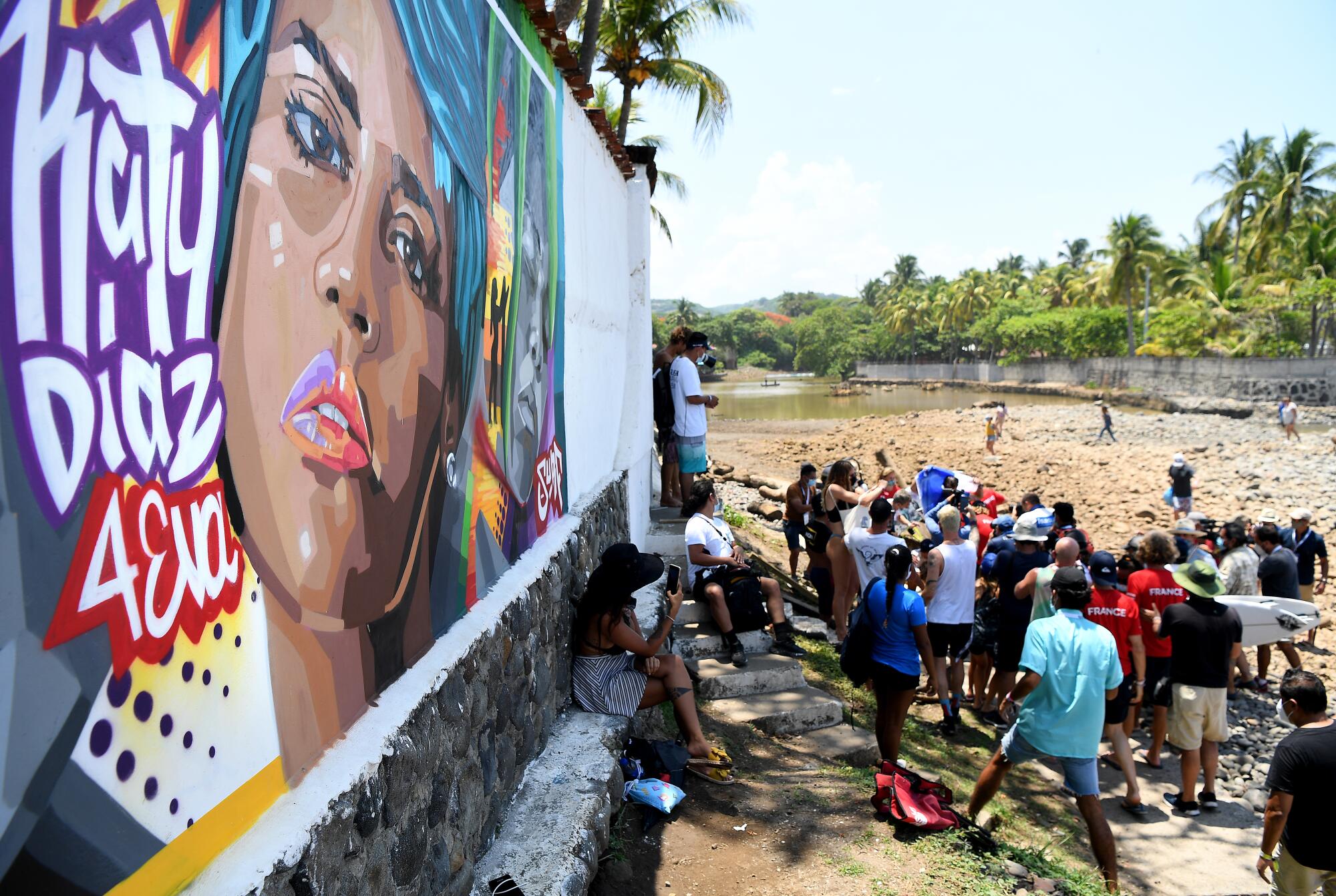
“She was just 22 with her whole life ahead of her, but with a stroke of destiny she died doing what she loved most,” he said.
Then, turning to the 256 competitors who were standing just a few feet from the spot where Díaz was killed, he continued: “You will now ride her waves, feel the sun she felt, walk in the sand she walked. So please enjoy everything.”
The Olympic trials for surfing are being held in El Salvador. The seeds for this were planted decades ago by young Californians looking for good waves.
For at least one listener, the speech brought home Díaz’s importance in her homeland.
“How often does a president talk about surfing?” he said.
Perhaps that was tribute enough. But a few days later José Díaz was asked if his sister would be remembered beyond the president’s speech.
“Definitely,” he said. “People don’t forget legends.”
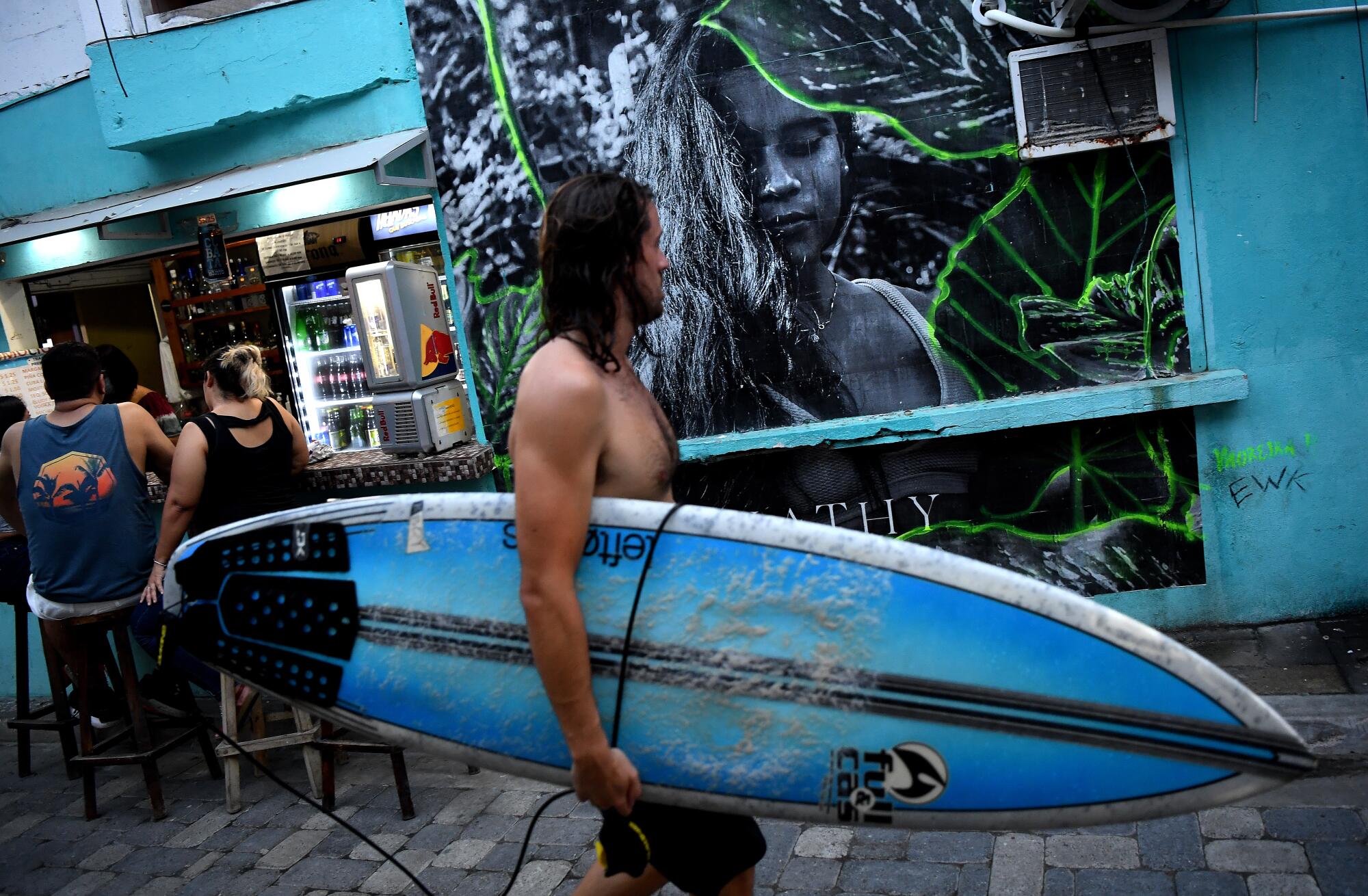
More to Read
Go beyond the scoreboard
Get the latest on L.A.'s teams in the daily Sports Report newsletter.
You may occasionally receive promotional content from the Los Angeles Times.

